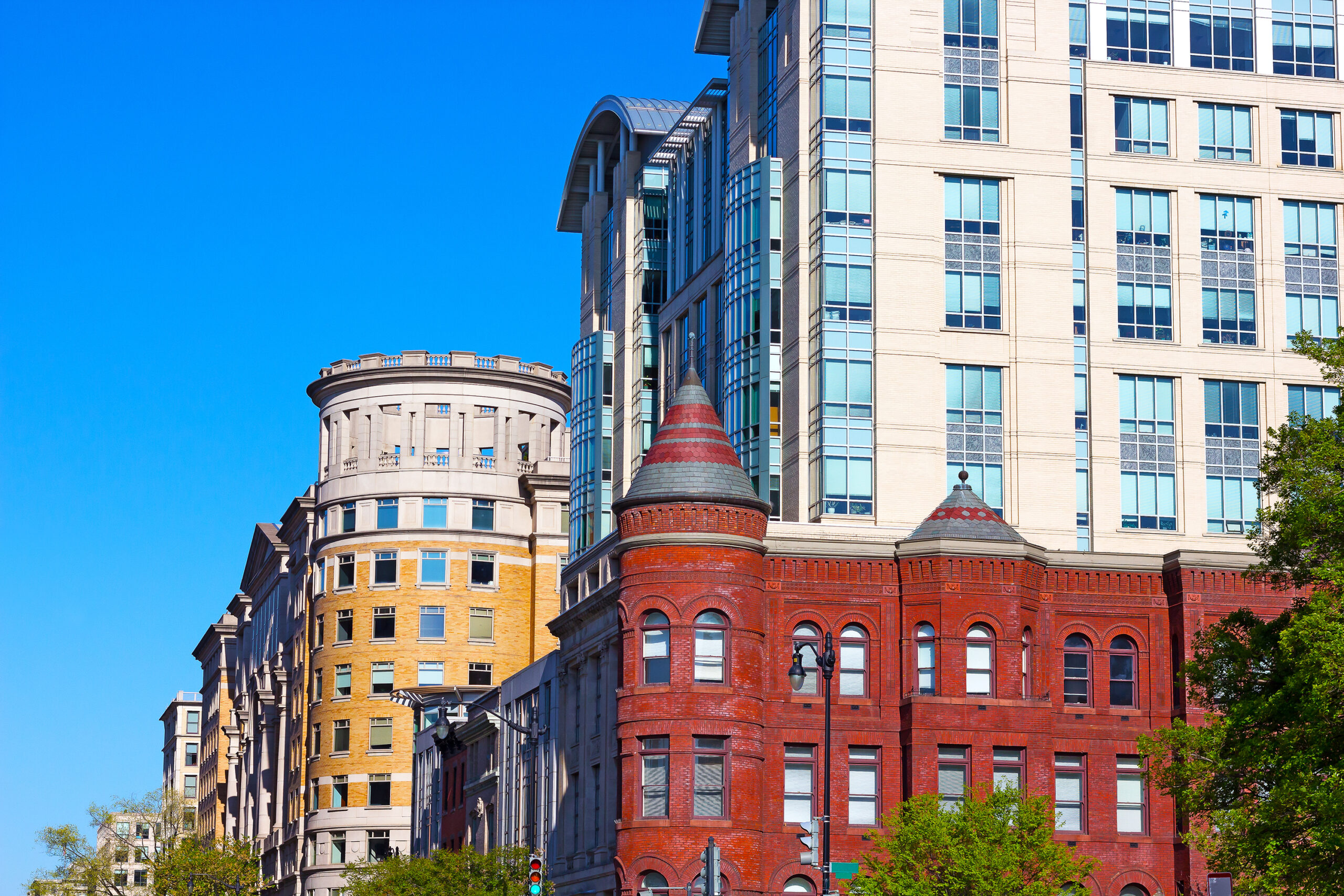This resource is available courtesy of

The 2017 District of Columbia Energy Conservation Code–Commercial Provisions, adopted in May 2020, includes significant changes to the modeled performance pathway. Several changes relate to compliance demonstrated by the performance pathway which requires project teams use ASHRAE 90.1 guidance to conduct an energy model to show whole building energy usage compared to a baseline reference design. If the proposed design performs better than the baseline, it is deemed compliant with the commercial energy code.
Some of the changes made to the performance pathway of the Commercial Energy Code result in design decisions in new buildings which are at odds with the District’s goals to decarbonize, with a phase-out of new gas systems in new construction buildings slated to begin in 2026 and carbon neutrality by 2045.
Two primary reasons for this conflict are:
- ASHRAE 90.1 mandates a natural gas baseline system for our climate zone for heating and service hot water systems.
- The Energy Cost metric ASHRAE 90.1 uses for compliance calculation favors natural gas in our utility territory. The cost of electricity is about 2.3 times higher than natural gas in the District per BTU, which disproportionately favors an energy source the District is trying to reduce.
To meet the District’s decarbonization goals, new construction projects will need to start switching natural-gas-based building systems to all-electric. With the energy cost metric, many all-electric building designs struggle to show compliance through the performance pathway, even though they are meeting or exceeding minimum prescriptive requirements. The District has acknowledged this conflict and has been working on potential solutions.
DOB to allow use of alternative metric to support efficient electric systems
To help encourage and support electric systems and provide a way to comply with the performance pathway, the Department of Buildings (DOB) has accepted, on a case-by-case basis, Modifications of Construction Code Requirements using a Site Energy metric instead of an energy cost metric.
Project teams wishing to use this approach can submit a code modification request following the instructions on DOB’s website. The request requires specific reasons as to why the strict use of the code is impractical and how the modification meets the intent and purpose of the DC Energy Conservation Code.
“The Energy Conservation Code shall regulate the design and construction of buildings for the effective use and conservation of energy over the useful life of each building. The Energy Conservation Code is intended to provide flexibility to permit the use of innovative approaches and techniques to achieve this objective. The Energy Conservation Code is not intended to abridge safety, health or environmental requirements contained in other applicable codes or ordinances.”
The code modification request can be made early in design prior to building permit submission to allow the design team to make decisions around equipment and system selection.
A Site Energy metric eliminates the cost variations of utilities and allows for a more equitable comparison of natural gas and electric systems. Site Energy focuses on the owner side of the meter and the building and system efficiencies owners and design teams can better influence. The Site Energy metric also provides a pathway for compliance for project teams wishing to use the flexibility of the performance path while also aligning with the District’s climate goals.
Example code modification request language
A code modification request should be written with any considerations unique to the given building. It can include some of the below points:
- The Performance Cost Index used in Appendix G of the DCMR 2017 Energy Construction Code is working against the District of Columbia’s broader goal to reduce greenhouse gas emissions by using an energy cost metric that favors natural gas systems
- Request: The project proposes to use a Site Btu calculation for the Performance Rating Method in lieu of the Performance Cost Index typically required by Section G1.2.2, Performance Rating Calculation
Future energy compliance
The proposed Site Energy metric will help with current code compliance, but it’s important to consider future energy performance and the Building Energy Performance Standards (BEPS). Energy codes establish minimum requirements but will not necessarily align with future energy performance targets.
While future BEPS performance targets aren’t known, they likely will require increasing levels of energy efficiency.
Design teams should always follow best practices such as:
- Invest in the envelope to reduce building loads
- Properly size mechanical equipment
- Evaluate efficient all-electric systems and appliances
- Test, verify, and commission the building envelope and mechanical systems throughout construction
- Train operations & maintenance staff on controls, set points, regular maintenance, and efficient use of equipment
- Monitor building energy use
- Establish a continuous commissioning process

Where DC’s Building Code Meets BEPS
Learn more tips for future-proofing your buildings.

